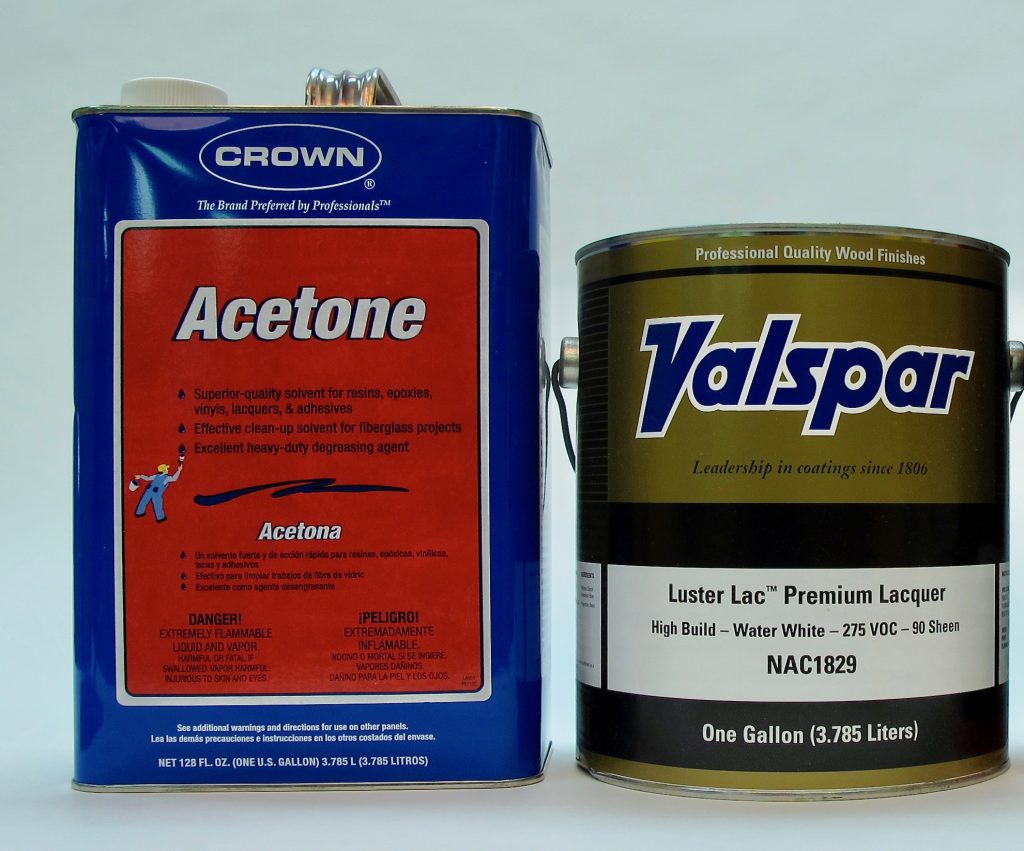We may receive a commission when you use our affiliate links. However, this does not impact our recommendations.

To make lacquer VOC compliant, manufacturers replace the polluting solvents with acetone. It’s called 275 VOC lacquer because it contains only 27.5% polluting solvents.
You may have noticed that acetone is becoming more widely available. This is primarily because it’s the only commonly available solvent that is classified as an exempt VOC solvent.
VOC is the acronym for volatile organic compound – that is, an environmental (smog) pollutant. Though acetone has a strong odor, making it seem to be toxic, it’s actually a fairly benign solvent in vapor form, limited at low exposure to causing only mild irritation to the central nervous system.
Being exempt means there are no regulatory restrictions on how much of this solvent we, or the manufacturers we buy from, use. No other commonly available solvent is so free of restrictions.
Acetone is also very useful because it is miscible (that is, mixable) with all common solvents and water, and thus many common paints, finishes and coloring products. So acetone can be added in significant percentages to most of the coating materials we use. (Water-based finishes and paints tend to coagulate, however, so you should test with a small sample.)
Also important, acetone is the fastest evaporating and one of the strongest of all commonly available solvents, and it is very “dry” (that is, non-oily). So it makes an excellent cleaner and degreaser and this is how it is used in most other industries.
The strength means that acetone can damage or remove most paints and finishes, so you should avoid using it as a cleaner on all but the most solvent-resistant coatings. These would include catalyzed varnish, two-part polyurethane, UV-cured finish and epoxy-resin finish. Unfortunately, some manufacturers are adding a lot of acetone to “paint thinner” to make it compliant, and this paint thinner will damage, or even remove, all but the most solvent-resistant coatings. You need to read the label to see if acetone has been added to the petroleum distillate.
When acetone is added to stains and finishes, it changes the application characteristics significantly. Any finishing product that contains a large amount of acetone dries very rapidly.
Fast drying can cause dry spray and blushing in finishes and toners. It can also cause an NGR dye stain to dry so fast that it doesn’t wet out the wood enough to bring out the expected color. But faster drying can also make lacquer dry at a normal rate in cold temperatures.
We are probably going to be dealing with acetone for the foreseeable future, so you should be aware of how it affects the finishing products you use.
Here are some supplies and tools we find essential in our everyday work around the shop. We may receive a commission from sales referred by our links; however, we have carefully selected these products for their usefulness and quality.










Any problem using acetone to clean metal objects like chisels or hand planes?
Thanks for all the good info.